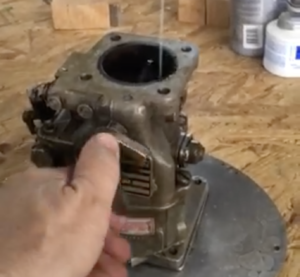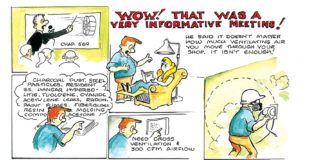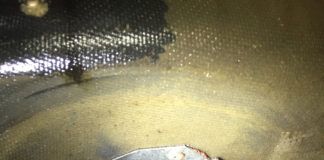 There is a never ending debate, with good arguments on both sides, about priming the simple four-cylinder, carbureted Lycoming engine before starting. For as long as we can remember, certified aircraft have had the good old priming pump, where you pull back slowly to fill the chamber with fuel, then push it in to squirt that fuel into one or more cylinder’s intake chamber. This works, so long as there are no leaks in the system, the copper plumbing hasn’t broken, and there are no blockages in the nozzles. It often gets the engine started as well!
There is a never ending debate, with good arguments on both sides, about priming the simple four-cylinder, carbureted Lycoming engine before starting. For as long as we can remember, certified aircraft have had the good old priming pump, where you pull back slowly to fill the chamber with fuel, then push it in to squirt that fuel into one or more cylinder’s intake chamber. This works, so long as there are no leaks in the system, the copper plumbing hasn’t broken, and there are no blockages in the nozzles. It often gets the engine started as well!
More often these days, homebuilders elect to leave the priming system off in order to simplify things, and use the accelerator pump to prime the engine WHILE IT IS BEING CRANKED. I know, I know… all caps. Well, this is really, really important, so I’ll repeat it (in boldface). You never want to pump the throttle to squirt fuel into the engine with an updraft carburetor unless you are cranking. Squirting fuel into the intake manifold while the engine is turning sucks all that fuel up into the engine, allowing all of the cylinders to get a chance to fire. The suction from all of those big pistons is actually quite amazing, and yes, if you are cranking the starter, the fuel will go up into the cylinders. But if you squirt the fuel with no suction, it will all fall back down through the carb, and collect in the air box. If you then get a backfire, you are likely to have an air box fire – and those can be very bad. By the time you know (in the cockpit) that you have a problem, the fire can really be going!
So how much fuel are we talking about? I happened to have a carburetor I am working with on the bench this week, and it still had fuel in the float bowl. So here’s a little video of just how much gas comes out with each pump. That spray, by the way, went up about six feet into the air (before falling back down as a fine mist all over my head). It’s probably as much fuel as you get out of a traditional old primer pump, so I always limit pump-priming to about three squirts, unless it is really cold.
Which way you want to go (primer system or accelerator pump) with your airplane probably depends a lot on where you live, and how much cold weather you see. If you live way up north, cranking speeds can be low due to cold batteries, and you will probably need more prime, so installing a dedicated system makes sense. If you live in warmer climes, priming is probably less important, batteries are warm, so a quick pump of the throttle will get the job done, with a simpler firewall forward installation. If you do prime with the throttle, just keep this little video in mind – that’s a fair amount of fuel to start a fire if you pump without cranking the engine.













